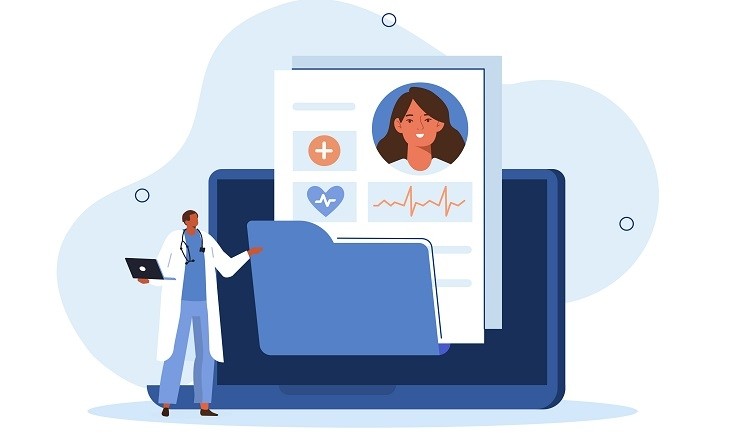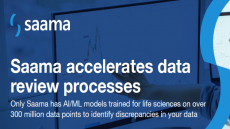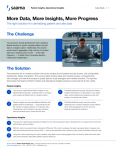Medical specialty societies can benefit from regulatory progress: IQVIA

Whenever health-centric regulations like the 21st Century Cures Act appear on the horizon, they frequently bring up challenges and questions, along with the advancements. For example, while this legislation and other recent developments are making it easier for patient registries to gather and share patient data, many still struggle with how to best put that data to appropriate use.
To learn more about how recent regulations can be of use to stakeholders in research and drug development, Outsourcing-Pharma recently spoke with Angela Kennedy, director of strategic operations for medical special societies at IQVIA.
OSP: What is a medical specialty society?
AK: A medical specialty society, also referred to as a provider association, is a membership organization representing a specific group of healthcare professionals, for example, the American College of Surgeons. Medical specialty societies perform many important functions and services for their members, including education, advocacy, and health policy.
Medical specialty societies help improve and facilitate quality, effective, and accessible patient care, leveraging member experience to research, develop, and implement the highest standards and practices. They also help set standards for excellence in their profession through clinical practice guidelines, quality measures, and quality improvement programs, most through the use of clinician-led clinical data registries.
OSP: How can the 21st Century Act help in collecting, sharing, and using patient data?
AK: The US 21st Cures Act (Cures Act) was signed into law by President Barack Obama on Dec. 13, 2016. The bipartisan legislation seeks to increase choice and access for patients and providers. Among many parts of its parts, The Cures Act seeks to ease regulatory burdens associated with the use of electronic health record (EHR) systems and health information technology (IT).
After the Cures Act was signed into law, it was passed to the Office of the National Coordinator for Health Information Technology (ONC) and the Centers for Medicare & Medicaid Services (CMS) for review. ONC and CMS produced two sets of rules based on the Cures Act’s interoperability, patient access, and information blocking provisions. These rules guide members of the industry, such as providers, payers, and technology vendors, as they design their health IT systems. Both the ONC and CMS rules fulfill the interoperability and information-blocking provisions of the Cures Act and are designed for increased patient access to their own information and guarantee a standard of interoperability across systems.
The Cures Act resulted in new regulations that fundamentally change how patient data is accessed and repurposed. It contains provisions focused on advancing interoperability and requiring developers not to engage in information blocking — or preventing or interfering with the access, exchange, or use of electronic health information (EHI). ONC defines EHI in their final rule as “the electronic protected health information (ePHI) in a designated record set (as defined in the Health Insurance Portability and Accountability Act (HIPAA) regulations) regardless of whether the records are used or maintained by or for a covered entity.”
For the purposes of information blocking, EHI is limited to the data elements represented in the US Core Data for Interoperability (USCDI). In a major step forward, the USCDI aims to improve interoperability of various medical data systems and enable data exchange between stakeholders such as physicians, insurers, labs, clinical data registries, and patients themselves. The final rule also has an array of requirements for standards-based application programming interfaces (APIs), with the goal to support a patient's access and control of their electronic health information.
ONC published its Information Blocking Final Rule in May 2020. The rule defines information blocking as any practice that interferes with the access, exchange, or use of EHI. The Information Blocking Rule strengthens the rights that patients have in terms of obtaining their electronic health data in the modern health IT environment. It also holds EHR vendors accountable for ensuring that health information is accessible.
The rule went into full effect on April 5, 2021, requiring providers, vendors, and any “actor” in the healthcare sector that takes part in health information exchanges to comply. At the root of the Information Blocking Rule is the desire to make electronic health data more accessible for patients or other entities as permitted by HIPAA. The Final Rule calls for the industry to support standards adoption using secure Application Programming Interface (API) functionality, the leading standard for the exchange of health information is Fast Healthcare Interoperability Resources (FHIR), and the Cures Act proposes the use of FHIR as the standard format.
Although the rule went into effect in April, healthcare organizations are not required to migrate to Fast Healthcare Interoperability Resources (FHIR) v4 APIs until December 31, 2022. As the FHIR v4 API deadline approaches, health IT vendors and providers will have to make decisions about how to operate from a clinical perspective while staying in line with the Information Blocking Rule.
CMS finalized the Interoperability and Patient Access Final Rule in March 2020, shepherding in the next phase for the Cures Act. CMS calls the new rules – which hold public and private entities accountable for enabling easy electronic access to health information – the most extensive healthcare data-sharing policies yet implemented by the federal government.
The rule requires CMS-regulated payers to implement patient access application program interfaces and provider directories, as well as increase data sharing with other payers. Together, these rules attempt to make it easier for patients to have access to and control over their health data. These final rules represent significant changes in how health care providers, health IT developers, and health plans use health IT.
OSP: Are there any ways in which the 21st Century Cares Act and other legislation/agencies might fall short in supporting and guiding?
AK: Even though the Cures Act interoperability and information-blocking requirements and subsequent regulations are designed to move the healthcare industry towards greater data access, the long phase-in of these provisions comes with challenges. The requirement is to move towards a more transparent system, but a significant amount of specific guidance compliance and enforcement details are not yet established.
More than a year after the public release of the Final Rule, confusion about information blocking remains widespread. CMS has not yet provided clarity about the potential penalties that could be imposed on providers for noncompliance, and the Office of Inspector General (OIG) has not finalized its proposed penalties for certified EHR vendors and health information exchanges. Finalization of some of those enforcement aspects and a lot more clarity is absolutely essential.
OSP: Why is capturing a more complete picture of a patient’s health history help innovation in drug development? Also, how can it help improve efficiency in various aspects of drug development?
AK: In November 2021, Congress introduced Cures Act 2.0. In Section 309 of the Cures 2.0 Act, which seeks to increase the use of real-world evidence and support the use of data from clinical care data repositories and patient registries to fulfill post-approval study requirements for products regulated by the Food and Drug Administration. This legislation is designed to modernize the health care delivery system and better utilize real-world data and real-world evidence across federal agencies.
Cures 2.0 also discusses the acceptance of decentralized trials. Clinical trials are necessary to bring safe and effective drugs and devices to the market. However, many drugs and devices are developed on small populations in laboratory-controlled settings that may not be reflective of real-life experience with a disease. Decentralized clinical trials, on the other hand, are conducted in a study participant’s home using digital tools. These can include more sensitive, objective measures with greater density of information, and can include many more study participants.
Although fully decentralized trials are not appropriate for all research, in many instances, decentralized trials can deeply enrich a study and the FDA should support the use of such trials.
Digital tools should not be validated by the FDA alone, but in collaboration with an appropriate medical specialty society, clinical expert, or physician informaticist to reinforce physician trust in the tool. Use and validation of digital health tools are two of the most critical areas for physicians to successfully realize the potential of these technologies.
OSP: Then, how can capturing more complete patient health stories improve patient engagement and care?
AK: The Cures 2.0 Act builds upon provisions of the 21st Century Cures Act that underscore how clinician-led clinical data registries are uniquely positioned to drive quality improvement initiatives. Cures 2.0 incorporates the 21st Century Cures Act’s definition of “clinician-led clinical data registry” as a clinical data repository that is established or operated by a clinician-led or controlled, medical specialty society or other similar organization; designed to collect detailed, standardized data on an ongoing basis for medical procedures, services, or therapies for particular diseases, conditions, or exposures; provides feedback to participating data sources; and meets certain quality standards.
Section 411 in the Cures 2.0 Act, which would ensure that clinician-led clinical data registries have meaningful access to real-world data (RWD) to better track patient outcomes over time, expand their ability to assess the safety and effectiveness of medical treatments, and provide them with the information necessary to assess the cost-effectiveness of therapies. This legislation would allow clinician-led clinical data registries to link their outcomes data with claims data in a way that would help ascertain the value of new medical technologies and therapies and assist in the development of effective alternative payment models (“APMs”).




















